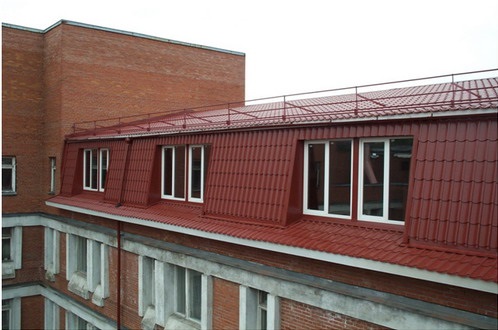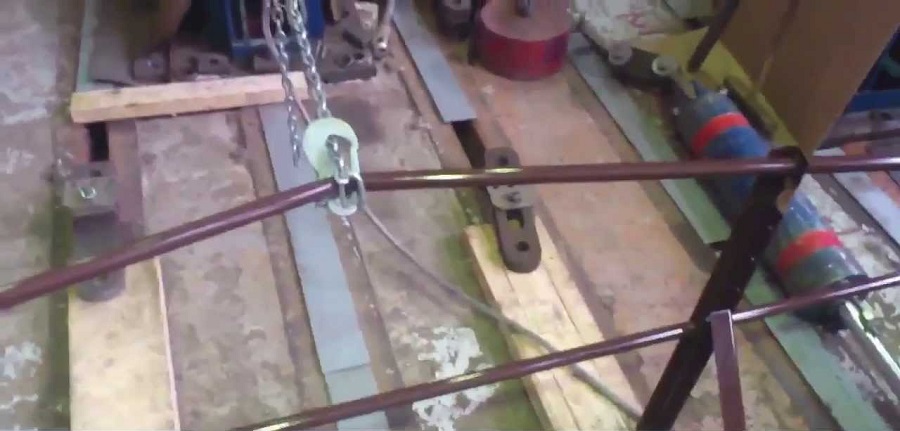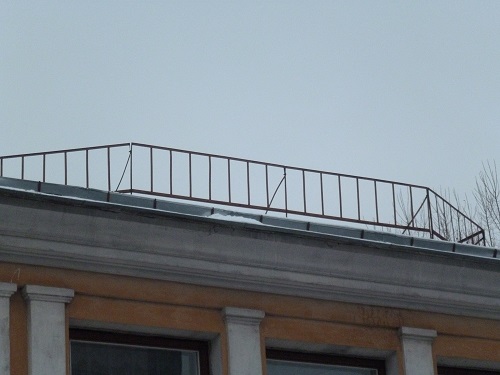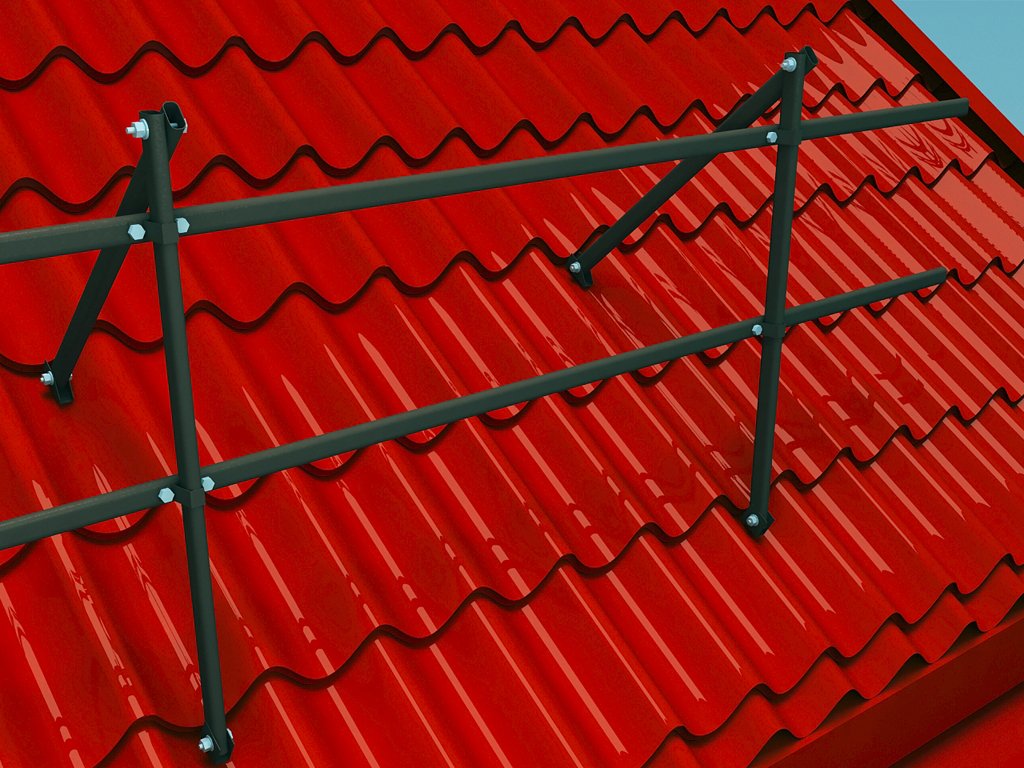Barrier elements in the roof device are of great importance. They are needed to ensure the safety of builders during the repair and installation of the roof. Roof fencing should be installed only on condition that its slope will be no more than 12 ° C - this is GOST roof fencing. Since this device is responsible for the safety of roofing and human life, it must be reliable and durable, as well as pass special tests. Testing of roof fencing has the right to conduct institutions that have the appropriate license.

As shown by many years of practice, the fence makes the roof safe for repair and maintenance. If you need to repair the roof, then with the fence system you can not worry about non-compliance with safety regulations. The fence will provide its necessary level.
The elements of fences include:
- fencing;
- snow retention;
- safety hooks;
- elements facilitating movement on the roof in case of evacuation.
Testing Roof Roof Fencing

After installing the fencing, structural strength tests should be carried out. The purpose of this test is to determine the quality of the fence and its ability to withstand loads during use. After carrying out such procedures, an act is drawn up to conduct the necessary test work.
Testing of roofing fences in child care facilities, in residential buildings, in warehouse, office buildings, as well as checking the technical condition are mandatory procedures that are provided for:
- GOST R 53254-2009 “Fire fighting equipment. Outdoor fire escape stairs. Protections of roofs and roofs. Test procedure. General technical requirements. ”
- PPB 01-03 “Fire Safety Rules in the Russian Federation”.
According to the requirements that are indicated in these documents, it follows:
- once a year to inspect and verify the integrity of the fences and staircases. As a result, an act of testing the roof fence is drawn up.
- every 5 years to test the strength of the roof fencing. According to the test results, a protocol is drawn up.
Testing and inspection should be carried out by the organization that has trained personnel and tested test equipment. Testing for strength and safety should be carried out in accordance with GOST R 53254-2009 with a static load one and a half times the maximum possible. The load is held for 2 minutes after which there should be no cracks, deflections and permanent deformations. When testing elements for which the test load may depend on many factors, certain formulas are used. In addition to the strength test, a visual audit of the quality of the protective coating (painting and primer) and welded joints is carried out. After the tests are carried out, a test report of the railing is written on the compliance of the roof fencing with the requirements of GOST. Tags are attached to the fences, on which the information on the test results is indicated.
The standard defines the main parameters, types and sizes, test methods, technical requirements, the procedure and rules for assessing the quality of roof fencing. Its requirements are applied at the stage of design and acceptance of the building into operation, as well as conducting the necessary regular tests of roof fencing.
Fencing classification:
- Mon - for all landings;
- MN - for all flights of stairs;
- VN - for all vertical stairs;
- KO - for roofs without a parapet;
- KP - for roofs with parapet.
The nomenclature of inspections and tests includes:
- verification of the main dimensions;
- verification of maximum deviations of shapes and sizes;
- quality control of all welds;
- visual inspection of the integrity of the structure and its fastening;
- quality control of all protective coatings;
- verification of the requirements for the location of the stairs;
- testing the stairs for reliability and strength;
- verification of stair railings for reliability and strength;
- checking the beams of the fixtures of the stairs for reliability and strength;
- verification of the fencing of the roof of the building for reliability and strength.

Fencing Test

Testing roofing fencing is a necessary safety measure for any structures or buildings. During the winter period, most organizations clean roofs from deposits of snow, ice and icicles and so on, while using fire escape routes for free access to the roof. For the safety of workers performing this type of work, it is necessary to conduct regular tests of roofing fences, structures, as well as elements of fire ladders.
The requirements for the tests of roof fencing and external fire escape are determined respectively with NPB 245-2001. According to this requirement, tests must be performed at least once every five years. When conducting operational tests, experts pay attention to the quality of the design, the absence of damage and tearing of elements, and the presence of anti-corrosion coatings. The fastening of the roof guard is also checked. Specialists can carry out all the necessary work regardless of the time of year, and without any restrictions. In the case of a negative result of the tests of the roof fencing, do not worry, since it is possible to carry out repair and painting work in a short time. Tests are carried out according to technical specifications, regulations and taking into account the GOST railing test norm. All testing equipment is regularly tested and provides reliable and accurate information.
Work should be carried out promptly, after their completion during the day you can get a full package of necessary documents. It will include the test report, as well as recommendations on troubleshooting and comments if they are found.
Protections of a roof of SNiP
The norms for testing railings of SNiP determine the order of installation of roof fences. These building codes and regulations provide for certain fencing standards for different types of roofs. It indicates what the height of the fence should be for a certain type of roof with a certain area and slope of the roofing.

Due to the different types of brackets for attaching the roof railing, it can be installed on metal tiles, seam roofs, natural tiles, slate roofs, profiled sheeting, bitumen-based materials.
Railing of the roof is provided on the roofs of high-rise buildings and on operated roofs. Roof fencing is performed with a height of up to 60 cm above the roof level. Such a fence is attached to the embedded parts of the panels by welding outside the roof or with racks that are fixed in the cornice. The railing of the roof with railings is bolted through the corrugated board and seals to the rafters.

The test must be carried out during daylight hours and in conditions of good visibility of the testers with the strict observance of safety regulations. The area where the test work will be carried out must be fenced and indicated with warning signs. Strength tests are “static”.





Alas, no comments yet. Be the first!